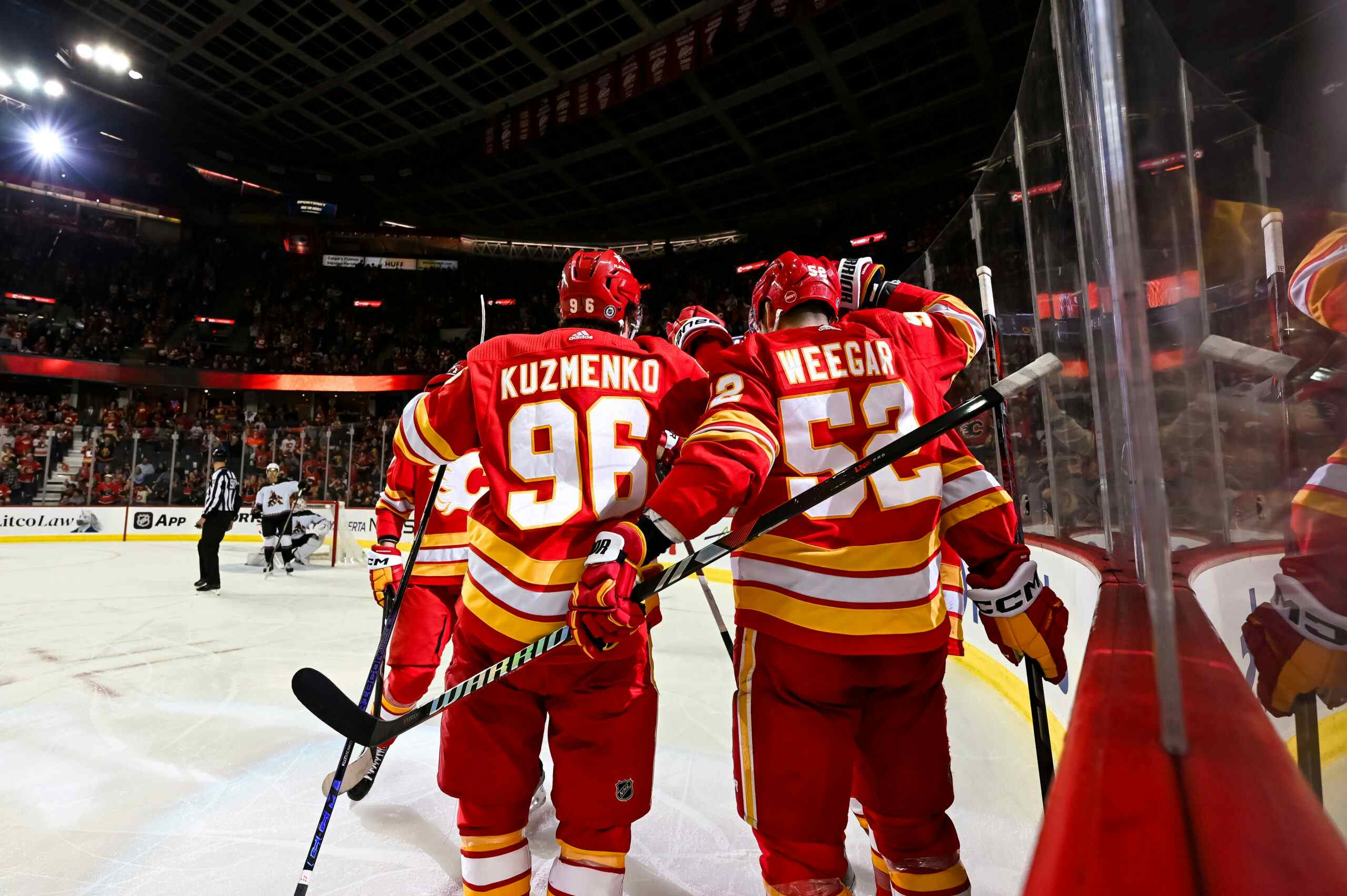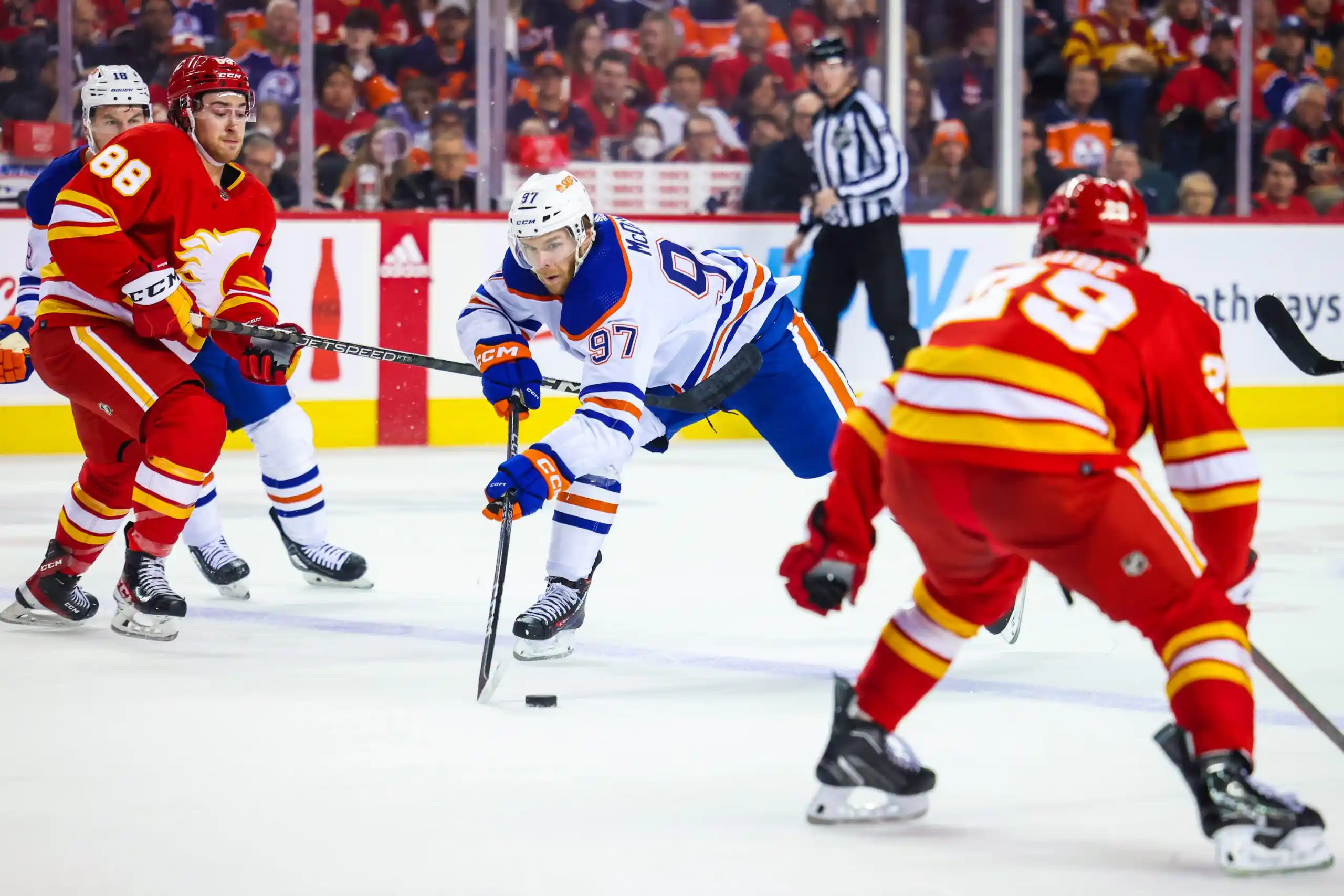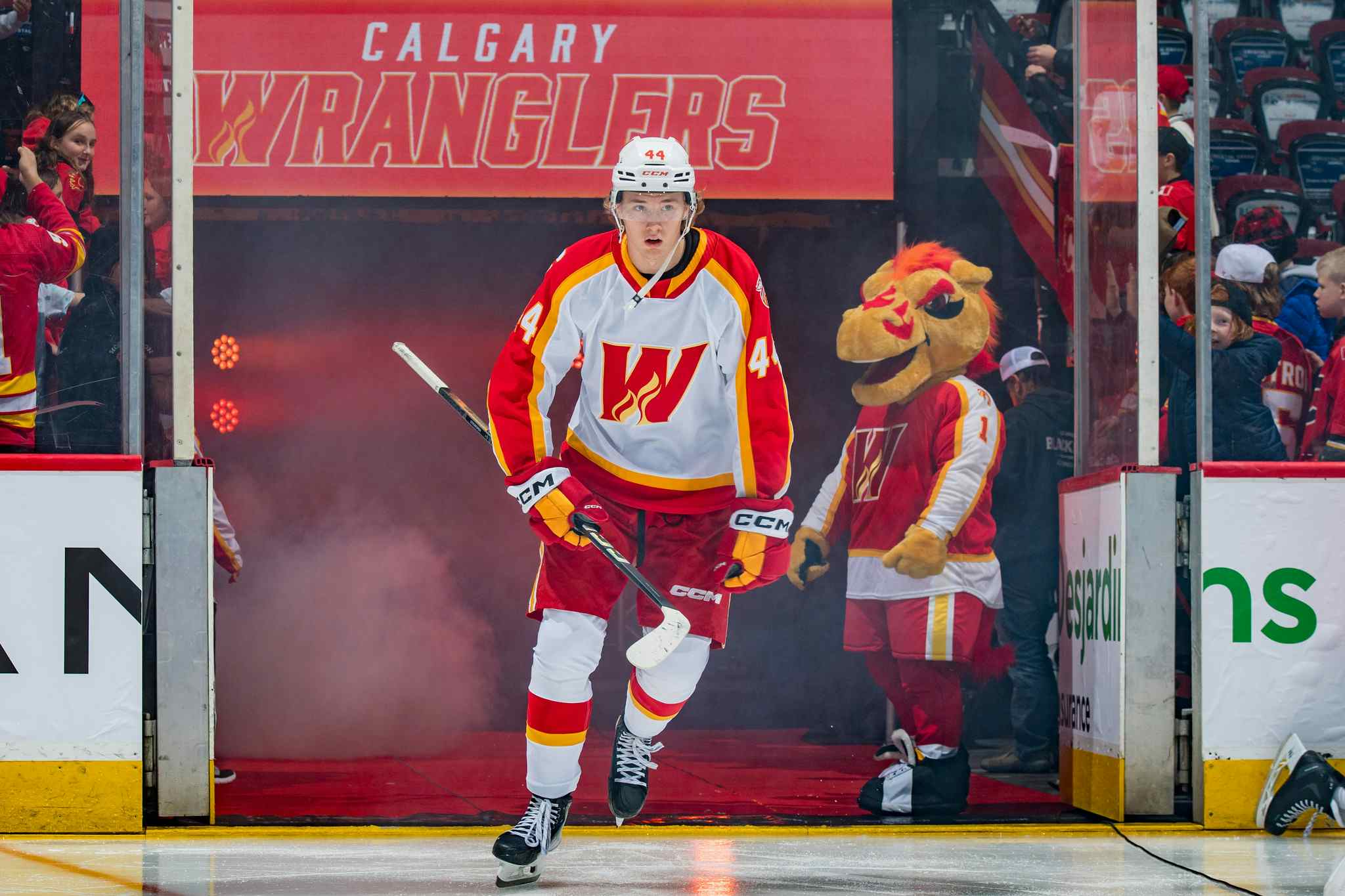Flames Before and After the Great Re-Build
By Kent Wilson
14 years agoWith the Olympic break upon us, now is a good time for some hardcore navel gaving. The Flames have provided plenty of fodder for introspection recently: the unprecedented mid-season house cleaning and their desperate drive for a play-off contain more drama than any of the angsty-privileged-teen shows that currently clutter cable.
The impetus for the upheaval was obviously Calgary’s on-going struggles; more specifically their inability to score goals. While a portion of their recent woes can be explained by variance (ie; bad luck), the writing was actually on the wall for the Flames much earlier in the year, ironically when they were filling the net at wil. For a portion October and November, Calgary enjoyed the best shooting percentage in the league, but were also one of the worst teams in terms of generating shots on goal. Their shot differential – a better indicator of future success than SH% – languished in the league’s basement.
While the goals haven’t exactly been plentiful post-Dion Phanuef, there are some positive indications that the club is headed in the right direction in terms of shot volume and differential. In the 7 games since the Phanuef trade, the Flames have managed 30+ shots on net four times. Their shot total over that span was 224, a full 52 more than they allowed (172). If one were to throw out the loss to Philadelphia – defensible, since the Flames lacked Higgins and Kotalik at the time and featured "dead men walking" in Jokiinen and Prust – then the differential is even more marked (+61). On a per game basis, that’s a difference of (32-24.6) of +7.4…+10.2 without the Philly contest. Those stats are in stark contrast to the Flames earlier numbers this year (-6/game range) and even their current shot differential of -37 (-0.6/game).
Of course, we’re talking a relatively small sample size here, so caveats apply: all sorts of things can happen during a 10 game slice of the season due to strength of schedule, injuries, officiating, etc. These are things that skew results and are more indicative of transient factors than anything else.
Thus, in order to explore the recent uptick in outshooting in context, I charted each of the Flames 62 games to date and graphed the results.

The thin, erratic blue line is the raw differential per game. The thicker, more prominent line is a rolling average trendline. I have the position of the Phildelphia contest marked to give an indication of when the trade(s) occured.
As you can see, the recent improvement is a strong one, but not unprecendented this season. The Flames spent a lot of time underwater in the first 30 games, in part because they played with the lead a lot due to their high shooting percentage, in part because Jarome Iginla and Olli Jokinen were mis-cast as hard matchup first-liners and in part because the results were good despite the poor underlying shot differential, so there wasn’t any real impetus to change.
About mid-December, however, the SH% began to regress and the offense predictably dried up. That’s about where you see the differentual trend plunge and begin it’s first real ascension upwards. It’s about the same time that Brent Sutter separated Iginla and Jokinen, pushed the latter down the depth chart and started to really fiddle with the matchups. The team experienced some success in late December, early January before sinking into the dreaded 9 game losing streak. Injuries mounted, confidence deflated and the shot differential moved downwards once again.
So here we are climbing the mountain over the last 7 games. Is it indicative of a real, enduring change evoked by the rebuild? Or is this another precursor to another precipitous plunge below zero? There’s arguements both ways – we can see by the graph that the post-trade shot differential improvement isn’t wholly unique this year. We can also see that prior improvements have been followed by some steep declines.
On the other hand, the general trend has been toward gradual improvement. If you were to color the space of the trendline above the "0" on the graph, you’d see only a small portion in the first 30 games of the year, but larger regions in the latter half. That’s good. In addition, the most recent outburst can be considered unqiue considering the precipitating circumstances: the injection of 7 NHL caliber forwards is a drastic alteration to the team. One would therefore rightly expect a drastic alteration to the underlying results.
Overall, put me down as "cautiously encouraged". The new Flames have muddled through their first 7 games without a full compliment of their regulars, having only recently activated Dawes and Moss from injured reserve. Once Rene Bourque returns after the Olympic break, we’ll finally get a real look at what the sacrifice of Dion Phaneuf and Olli Jokinen has bought the organization. And that’s assuming, of course, Darryl doesn’t have any other trade deadline surprises up his sleeve…
Recent articles from Kent Wilson






